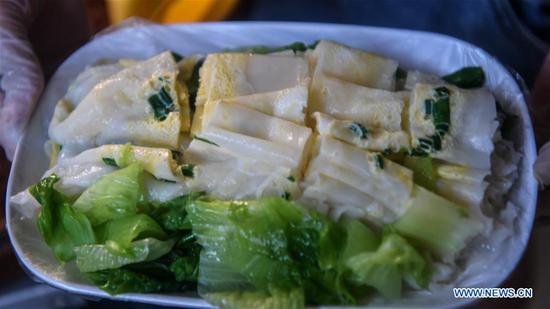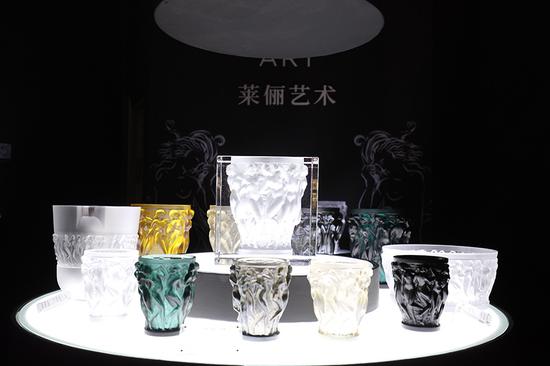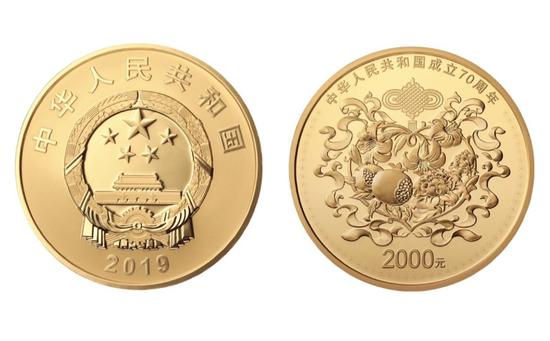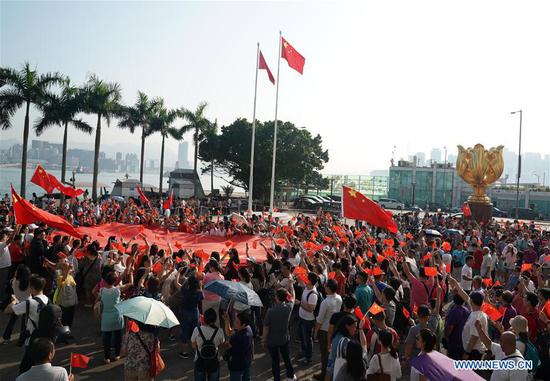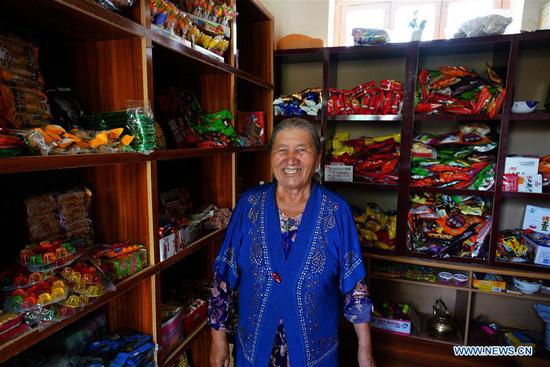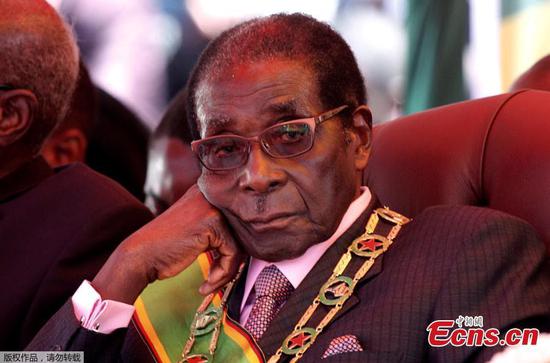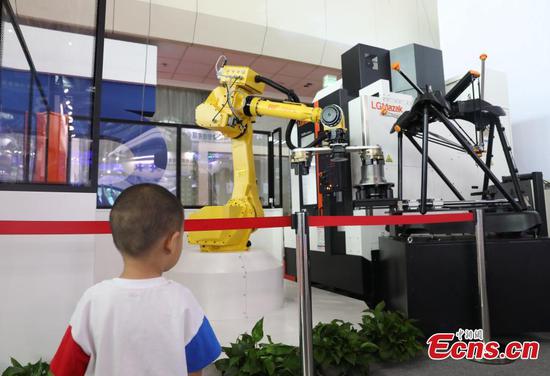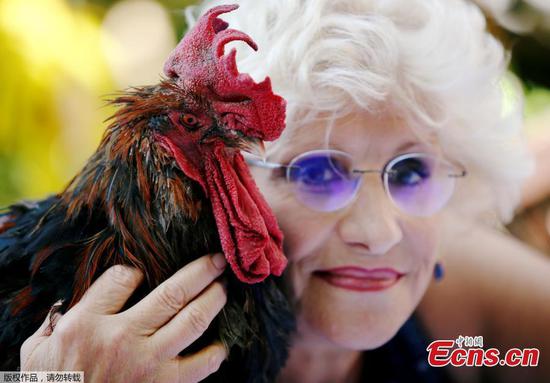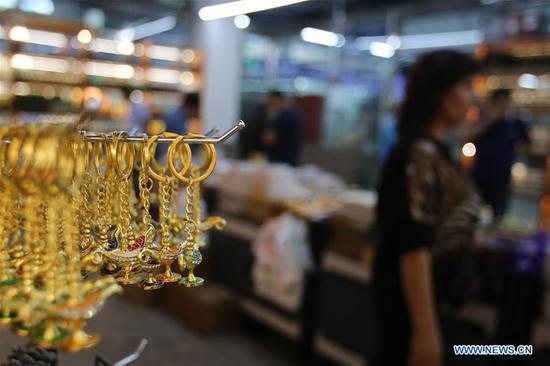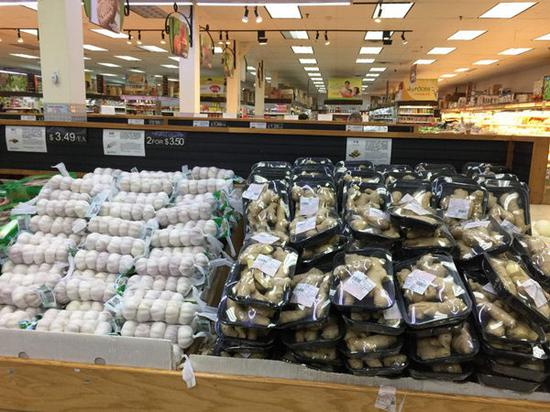
Ginger and garlic are placed in juxtaposition at a supermarket in New York, the United States, Sept. 6, 2019.(Xinhua/Xia Lin)
A 20-30 percent rise in the price of basic cooking ingredients like garlic and ginger across the United States, which stemmed from the administration's trade friction with China, has earned heavy complaints and doubt about the government's trade policy, a garlic and ginger importer told Xinhua recently.
"Most garlic and ginger sold in the U.S. market come from China. People have no choice but (to) use these Chinese produces, albeit they sell more expensive," said Nick Wang, who imports garlic and ginger from China's Shandong Province and once garnered a 70 percent of market share in America.
Garlic and ginger are among the Chinese goods listed by the U.S. government in 2018 and 2019 for heavier import tariffs. Since they are the daily essentials for cooking, muttering and displeasure arose from a wider field.
"The importer, wholesaler and retailer won't gulp the extra tariffs. They channel them to the consumers. It is the consumers who pay in accordance with the padded price tag eventually," said Wang.
Zhang, who declined to give his full name, purchases produces for his company's dining hall one or two times a week. The price rise he has experienced is steep.
A can of peeled garlic, weighing 5 pounds (about 2.3 kg), is now sold at the wholesale market for around 12 U.S. dollars, compared with 6 dollars a year ago. A carton of ginger is worth 18 dollars, while it just cost 12 dollars in the past, he explained.
"Other produces like Chinese cabbage are also much more expensive. The problem is that my budget is still the same as before," said Zhang.
Garlic and ginger are always placed in juxtaposition at various markets. At one supermarket beside the Queens Boulevard in New York, 10 heads of garlic are sold for 3.5 dollars and ginger is billed at 1.99 dollars per pound (about 4.5 kg).
Staff of the supermarket admitted that the price tag has been changed for several times to accommodate the tariff increases that have been already accumulated to 20-30 percent.
At another supermarket in the Elmhurst neighborhood in New York, ginger is the same price, but garlic is 4 cents higher at 1.79 dollars for 5 heads. One shopper has noticed the change for a period of time, saying the jump is just numbered several dimes.
"But you must know it is several dimes for one vegetable. Each day we have to eat many kinds of food. Several dimes for one type of food mean several hundred dollars for a family for one year, maybe topping a thousand dollars for some families," said the shopper, who didn't give her full name.
CONSUMERS SWALLOW "BITTER FRUIT"
Extra tariffs befell Chinese garlic last year and ginger in early September. Since then, Wang has overheard frequent complaints among customers at the supermarkets where his imported produces are sold.
"It (the tariff row) is a bully in trade that has molded the current pattern: more tariffs, higher prices, once and for all. Unfortunately, and probably unexpectedly to the U.S. government, all the bitter fruits have to be swallowed by the American consumers," said Wang, who came to the United States over 20 years ago.
"Trade should be conducted in its own way. Reciprocity and equality are its basis. However, if one is self-centered and always obsessed with maintaining his No. 1 status by playing the trade card, then his trade policy is improperly utilized, bent and distorted," said Wang.
The shopper shares a similar opinion written in a report on Friday by the United States Chamber of Commerce (USCC), the largest U.S. business lobby group.
Forty-three percent of Fortune 500 firms -- up from 30 percent at the start of the year -- have shown concern about U.S. President Donald Trump's tariff battle with China; tariffs may be at point where they "seriously" hurt companies, consumers and the wider economy, said the report.
"Tariffs imposed on imports from our biggest trading partners, especially China, may be reaching a tipping point where they have a serious impact on companies, consumers, and the wider economy," wrote Thaddeus Swanek, senior writer and editor with the USCC strategic communications team.
To make things worse, the tariff is a weapon wielded by the U.S. government not only against China, but also its traditional allies like Canada and Mexico, said Wang.
Seeing U.S. buyers pay the price for their government's "erratic" action and complaints pile up about its trade decision, Wang believes that the current policy of repeatedly imposing tariffs on Chinese goods in order to contain China is not to endure.
"When it proves to get nowhere in the end, it will end," he added.
USCC chief executive Tom Donohue holds the same stand, recently writing in The Washington Post that "for the Trump administration's part, the escalation of trade tensions with China must come to an end."














